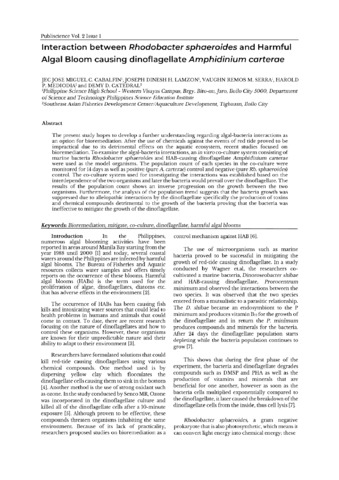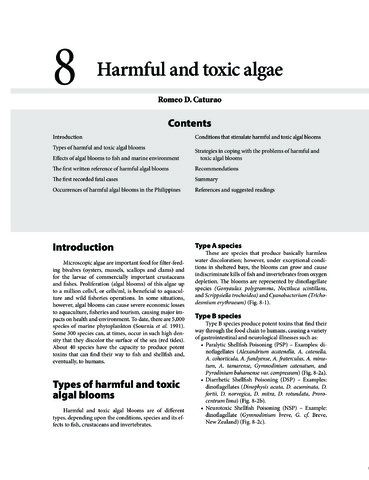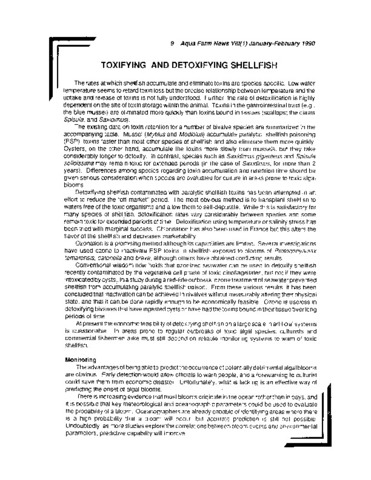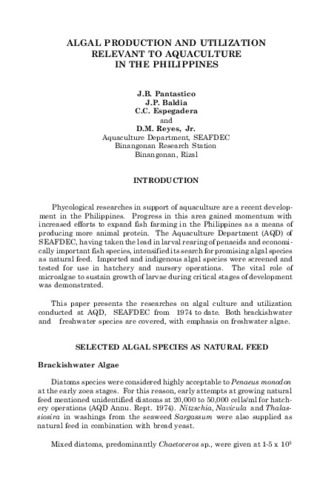Interaction between Rhodobacter sphaeroides and Harmful Algal Bloom (HAB) causing dinoflagellate Amphidinium carterae
- Global styles
- MLA
- Vancouver
- Elsevier - Harvard
- APA
- Help

Download URL
www.publiscience.orgDate
2019Author
Page views
1,378ASFA keyword
AGROVOC keyword
Taxonomic term
Metadata
Show full item record
Share
Abstract
The present study hopes to develop a further understanding regarding algal-bacteria interactions as an option for bioremediation. After the use of chemicals against the events of the red tide proved to be impractical due to its detrimental effects on the aquatic ecosystem, recent studies focused on bioremediation. To examine the algal – bacteria interactions, an in vitro co-culture system consisting of marine bacteria Rhodobacter sphaeroides and HAB – causing dinoflagellate Amphidinium carterae were used as the model organisms. The population count of each species in the co-culture were monitored for 14 days as well as positive (pure A. carterae) control and negative (pure Rb. sphaeroides) control. The co-culture system used for investigating the interactions was established based on the interdependence of the two organisms and later the bacteria would prevail over the dinoflagellate. The results of the population count shows an inverse progression on the growth between the two organisms. Furthermore, the analysis of the populations trend suggests that the bacteria growth was suppressed due to allelopathic interactions by the dinoflagellate specifically the production of toxins and chemical compounds detrimental to the growth of the bacteria proving that the bacteria was ineffective to mitigate the growth of the dinoflagellate.
Suggested Citation
Cabalfin, J. J. M. C., Lamzon, J. D. H., Serra, V. R. M., Mediodia, H. P., & Catedral, D. D. (2019). Interaction between Rhodobacter sphaeroides and Harmful Algal Bloom (HAB) causing dinoflagellate Amphidinium carterae. Publiscience , 2(1), 159-164. http://hdl.handle.net/10862/5999
Type
ArticleISSN
2619-7359Collections
- Journal Articles [1258]
Related items
Showing items related by title, author, creator and subject.
-
Harmful and toxic algae
Caturao, Romeo D. (Aquaculture Department, Southeast Asian Fisheries Development Center, 2010)The chapter provides basic facts about harmful and toxic algae. It also discusses the conditions that stimulate their occurrence, different types of harmful and toxic algal blooms and their effects to fish and marine ... -
Toxifying and detoxifying shellfish
Carreon-Lagoc, Julia; Southeast Asian Fisheries Development Center, Aquaculture Department (Aquaculture Department, Southeast Asian Fisheries Development Center, 1990) -
Algal production and utilization relevant to aquaculture in the Philippines
Pantastico, Julia B.; Baldia, Jose P.; Espegadera, Corazon C.; Reyes, Deogracias M., Jr. (Aquaculture Department, Southeast Asian Fisheries Development Center, 1990)An outline is given of research conducted at the Aquaculture Department of SEAFDEC at Rizal, Philippines regarding algal culture and utilization. Culture methods for both brackishwater and freshwater algae are described ...





